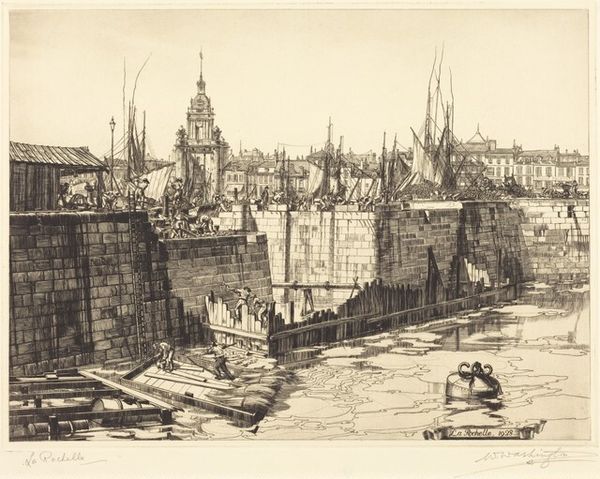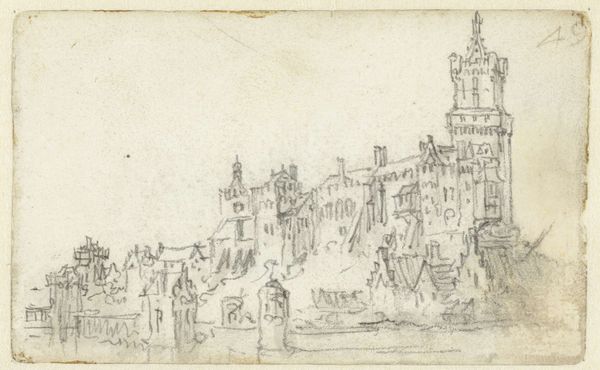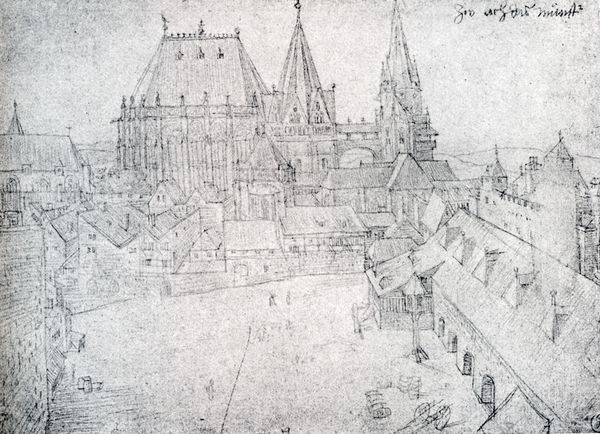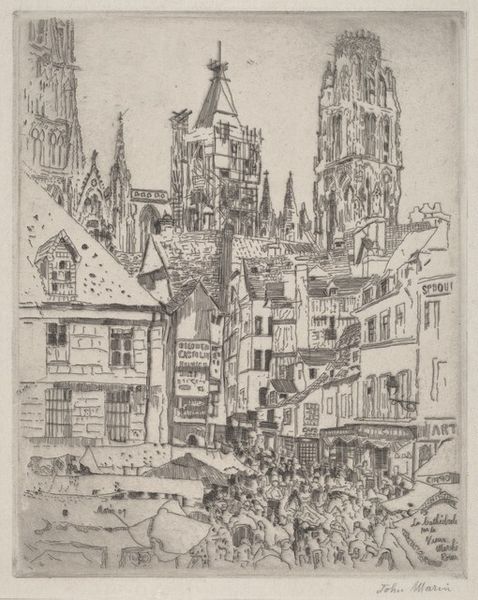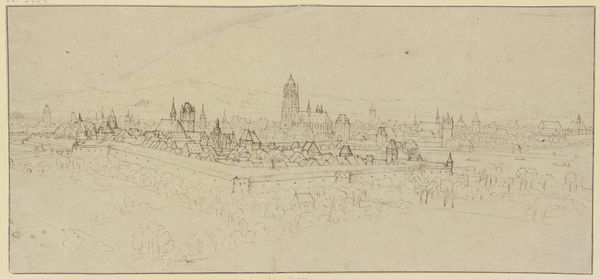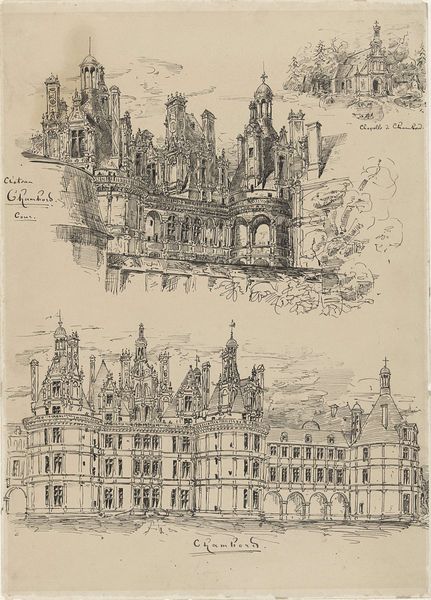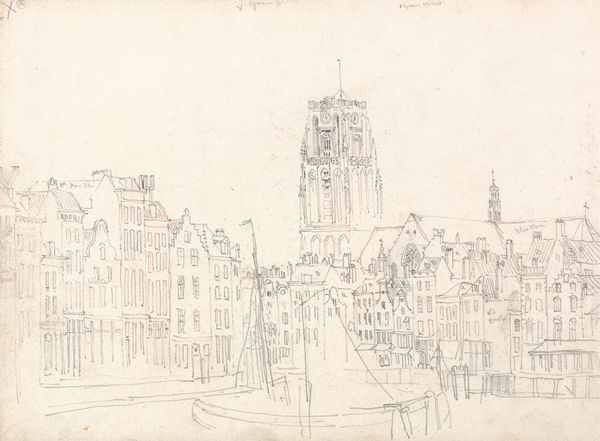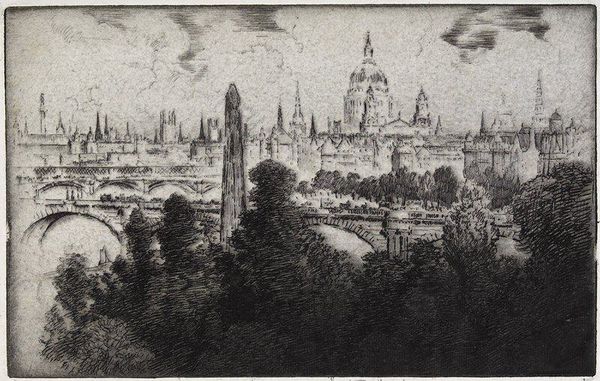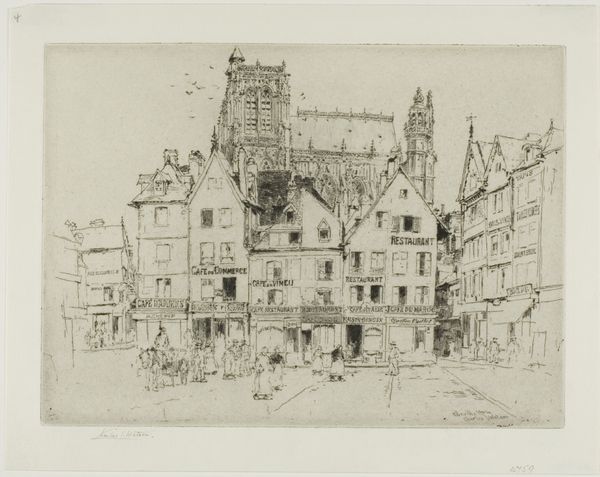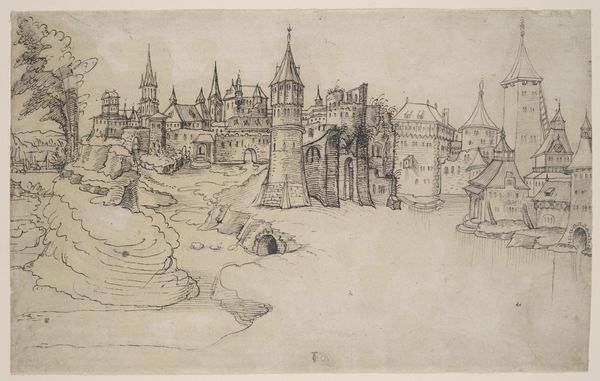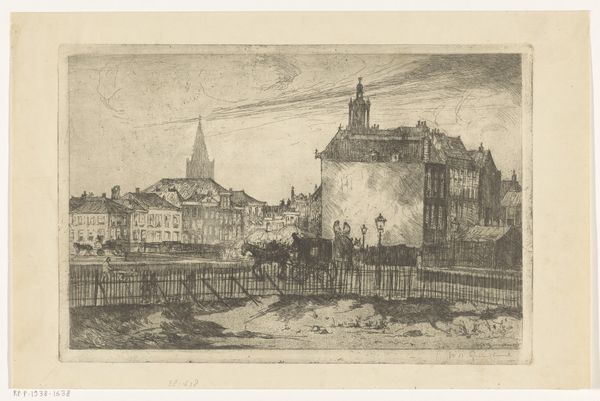
print, etching
# print
#
etching
#
landscape
#
etching
#
cityscape
Dimensions: plate: 27.62 × 32.86 cm (10 7/8 × 12 15/16 in.) sheet: 34.29 × 40.48 cm (13 1/2 × 15 15/16 in.)
Copyright: National Gallery of Art: CC0 1.0
Curator: The first thing that strikes me about this etching is the incredible detail packed into a relatively small space. Editor: Agreed. At first glance, Ernest D. Roth’s “Sevilla,” created in 1921, looks almost overwhelmingly complex. There's a definite energy here, a bustling sense of place captured in ink. Curator: Precisely. The etching technique really allows for an extraordinary level of intricacy. You see the rooftops of Sevilla tiered downwards and the towering cathedral. I wonder how that relationship resonated with viewers at the time? It has religious weight, but the cathedral becomes one of many historical palimpsests of that area. Editor: The composition presents the cathedral, almost burying its symbolism behind the day to day life in the area. The artist seems concerned with its spatial place within the culture as opposed to it spiritual nature. Etchings like this also helped to circulate images of European cities to wider audiences and at accessible price points. These cityscape views are carefully curated views, not unlike a postcard. Curator: Postcards are an apt comparison. Though an idealized view, you also notice these humble, lived-in homes, which speak to a more common experience than royalty residing at the cathedral. It seems the image gives rise to conversations between socio-economic classes. You almost detect cultural memory that speaks volumes about our complex connection to historical structures and the passage of time. Editor: The detail also belies the technical skill involved. Roth creates a real sense of depth and texture through the different line weights and densities. By allowing viewers to purchase the artwork at an affordable cost, it gave people a physical touchstone that they were able to cherish for generations. I am moved when I think of its cultural value in our present. Curator: Seeing "Sevilla," makes you question the many voices of Spain’s architectural symbolism. What do these structures tell about history's many complex socio-political implications. Editor: I agree entirely. There's a lot to unpack here regarding Spain’s history as told by one American artist.
Comments
No comments
Be the first to comment and join the conversation on the ultimate creative platform.
